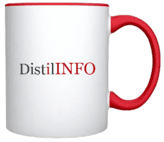
Executive Order Targets High Prescription Costs
President Donald Trump has launched a renewed effort to tackle America’s high prescription drug prices through an executive order signed Monday. The order aims to align US medication costs more closely with the significantly lower prices paid in foreign countries, representing an expansion of similar initiatives from his first administration.
The executive order establishes a framework where pharmaceutical companies are being asked to voluntarily reduce their prices or potentially face stricter regulatory measures. This approach reflects Trump’s negotiation-focused strategy to addressing healthcare costs that burden millions of Americans.
Pharmaceutical Industry Response
Despite initial concerns that sent pharmaceutical stocks tumbling after Trump teased the action on social media Sunday night, the actual order proved less severe than industry insiders had feared. As details emerged Monday morning, shares of major drug manufacturers rebounded significantly.
Market analyst Michael Yee of Jefferies highlighted this sentiment in a note to clients, describing the executive order as “vague with little detail on implementation.” He noted the stock “reaction is positive, with the interpretation being ‘better than feared.'” Major pharmaceutical companies including Eli Lilly & Co., Pfizer Inc., Bristol Myers Squibb Co., and Merck & Co. all saw their stocks rise in New York trading following the announcement.
America’s Unique Drug Pricing Challenge
The United States maintains the highest prescription drug prices globally, a situation that has both positive and negative implications. While these premium prices fuel pharmaceutical innovation and industry growth, they create significant financial burdens for American patients and the healthcare system.
During his White House announcement, President Trump directly addressed this disparity, stating that Americans effectively “subsidize the health care of foreign countries” through higher medication costs. This perspective has remained consistent throughout his administrations and forms the foundation of his drug pricing policies.
Building on Previous Efforts
This isn’t Trump’s first attempt to tackle prescription drug pricing. During his initial term, he employed a similar negotiation tactic by signing an executive order on drug pricing policy while withholding its details from the public as negotiation leverage. However, that initiative ultimately collapsed under legal challenges after coming too late in his administration to gain traction.
The current approach represents a more comprehensive strategy that expands beyond his previous efforts. White House officials have indicated the program will cut across different medication access programs, with special focus on:
- Medicare drug pricing – targeting the government health program serving elderly Americans
- Weight-loss medications – addressing the rapidly growing and expensive category of drugs
- Cross-market pricing reforms – aiming to lower costs across various insurance markets
Potential Importation Leverage
The administration has also indicated it may pursue increased importation of medications from abroad as an additional lever to pressure pharmaceutical companies. While importing pharmaceuticals is generally prohibited, exceptions exist for personal use, with many Americans already purchasing medications from Canada.
White House officials suggested they could expand drug importation from additional countries if pharmaceutical manufacturers don’t engage sufficiently in price negotiations. This approach provides significant leverage in discussions with drugmakers who typically resist foreign imports.
International Trade Component
Beyond simply lowering domestic prices, Trump’s order contains provisions aimed at increasing what other countries pay for medications. The executive order directs both the US Trade Representative and the Department of Commerce to address what White House officials described as “unreasonable or discriminatory policies that suppress drug prices overseas.”
This two-pronged approach seeks to reduce the pricing disparity by both lowering American costs and raising international ones—potentially redistributing the financial burden of pharmaceutical research and development more equitably across developed nations.
Targeting Pharmacy Benefit Managers
The order also takes aim at pharmacy benefit managers (PBMs), the powerful middlemen who negotiate between drugmakers and insurers. These entities have faced increasing scrutiny for their role in the prescription drug supply chain and potential contribution to high consumer costs.
Trump’s order specifically directs the Department of Health and Human Services to explore pathways allowing pharmaceutical manufacturers to sell medications directly to patients at lower prices, though specific implementation details remain unclear.
The market responded immediately to this portion of the order, with CVS Corp.—which operates one of the largest pharmacy benefits units in the country—seeing its stock fall as much as 5.7%. A CVS representative defended the company’s work in lowering prescription costs while redirecting blame to the pharmaceutical industry for “price-gouging the American consumer.”
Industry Reactions and Future Implications
Responses from major pharmaceutical companies have been limited, with most declining to comment or not responding to requests. Eli Lilly representatives did issue a statement agreeing that prices should be “shared more fairly across developed countries” while suggesting the best way to reduce costs is “if intermediaries take less for themselves”—a direct criticism of PBMs.
This executive order represents just one element of mounting political pressure on the pharmaceutical industry. The Trump administration is also expected to announce potential tariffs on pharmaceuticals in the future, creating additional uncertainty for drug manufacturers and healthcare stakeholders.
As implementation details emerge in the coming weeks and months, the true impact of this initiative on America’s prescription drug pricing landscape will become clearer for both consumers and the healthcare industry.
Discover the latest GovHealth news updates with a single click. Follow DistilINFO GovHealth and stay ahead with updates. Join our community today!

